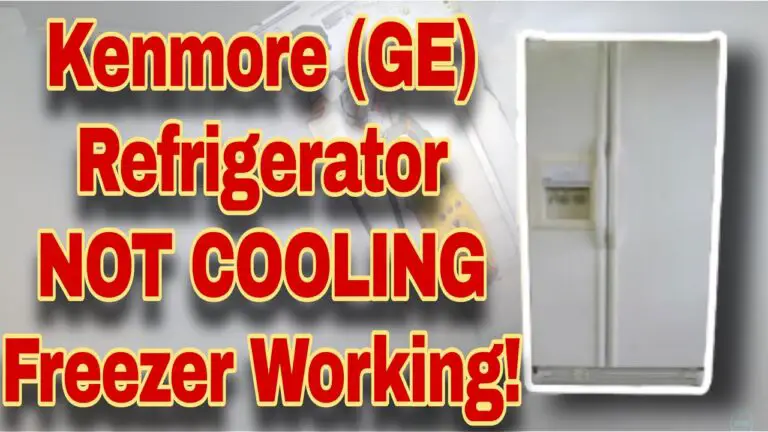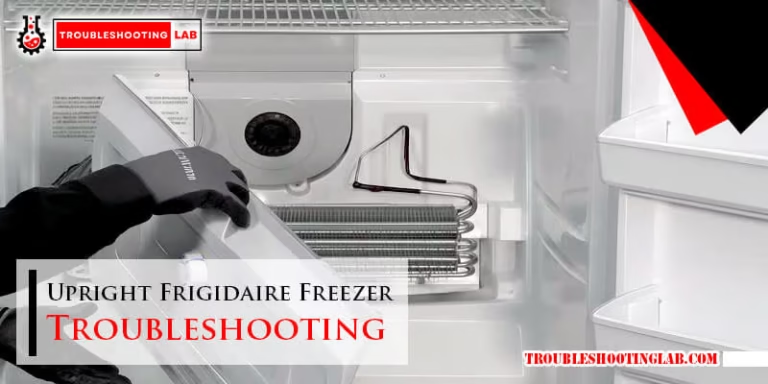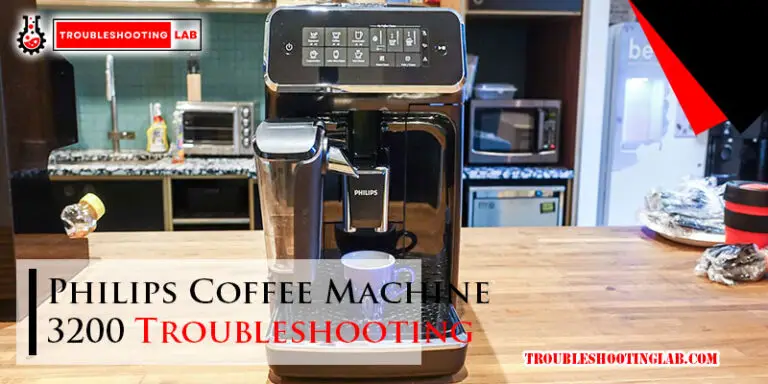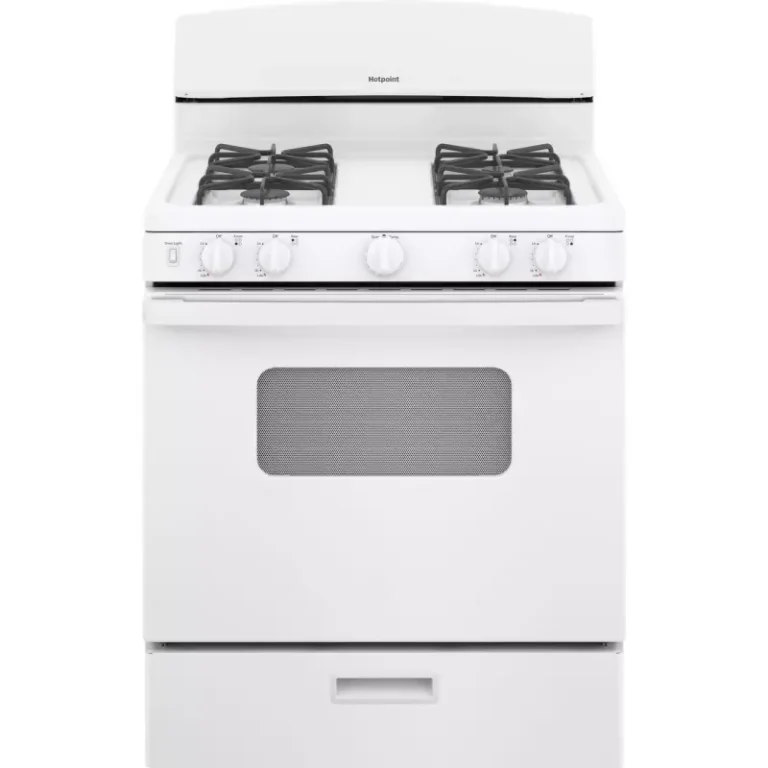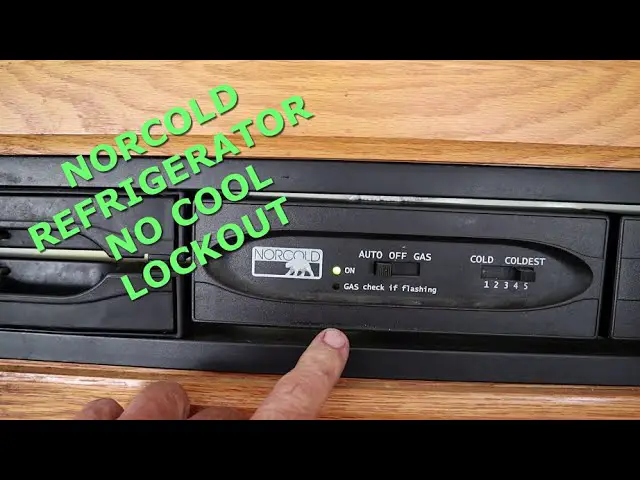Midea Refrigerator Troubleshooting: Quick Fixes and Tips
Is your Midea refrigerator acting up? Don’t worry—you’re not alone.
Whether it’s a cooling issue, strange noises, or a mysterious puddle of water on the floor, these hiccups can disrupt your daily routine and leave you feeling frustrated. But here’s the good news: most refrigerator problems have simple fixes that you can handle on your own without calling for expensive repairs.
In this guide, you’ll discover practical troubleshooting tips tailored specifically for Midea refrigerators. We’ll help you pinpoint the root cause of the problem and walk you through easy-to-follow solutions. Stick with us, and by the end of this article, you’ll feel confident in getting your fridge back to working like new. Ready to take the stress out of your appliance woes? Let’s dive in!
Common Issues With Midea Refrigerators
Midea refrigerators are reliable appliances, but they can face occasional issues. Knowing these problems helps you identify and solve them quickly. Below, we discuss the most common Midea refrigerator issues and their potential causes.
1. Temperature Fluctuations
Temperature fluctuations are a frequent issue with refrigerators. Your fridge may feel too warm or too cold. This could happen due to a faulty thermostat. Blocked vents or overloaded shelves may also disrupt airflow.
2. Refrigerator Not Cooling
Sometimes, a Midea refrigerator stops cooling altogether. This might result from dirty condenser coils. A malfunctioning compressor or a failed evaporator fan motor can also cause this problem.
3. Excessive Frost Build-up
Excess frost in the freezer can be frustrating. This often occurs due to a damaged door seal. A broken defrost timer or heater can also lead to frost accumulation.
4. Water Leaking
Water leaks are another common concern. Clogged or frozen defrost drain tubes are typical culprits. Improper leveling of the refrigerator might also cause water pooling underneath.
5. Strange Noises
Unusual noises can indicate an issue. A noisy refrigerator may have a faulty condenser fan or motor. Loose or worn-out parts can also create rattling sounds.
6. Ice Maker Not Working
The ice maker may stop producing ice unexpectedly. This can result from a clogged water line. A broken water inlet valve or faulty ice maker motor might also be responsible.
7. Interior Light Not Working
The interior light may fail to turn on. This could happen due to a blown bulb. A faulty door switch might also prevent the light from functioning.
8. Refrigerator Door Not Closing Properly
A refrigerator door that doesn’t close properly can cause cooling issues. This often happens due to misaligned hinges. A worn-out door gasket can also prevent a tight seal.
Refrigerator Not Cooling
A refrigerator that isn’t cooling properly can be frustrating. This issue might lead to food spoilage and unnecessary expenses. Understanding the reasons behind cooling problems can help fix them quickly. Below are some common causes and steps to troubleshoot the problem.
Checking The Power Source
Ensure the refrigerator is connected to a working outlet. Check if the plug is firmly inserted into the socket. Inspect the socket for signs of damage or loose wiring. Confirm that the circuit breaker hasn’t tripped. If the power source is faulty, the refrigerator won’t cool at all.
Inspecting The Thermostat Settings
The thermostat controls the refrigerator’s cooling level. Ensure the thermostat is set to the correct temperature. A setting too low may cause insufficient cooling. Check the manual for recommended thermostat settings. Avoid setting it to extreme levels, as this can affect performance.
Cleaning The Condenser Coils
Dirty condenser coils reduce cooling efficiency. Locate the coils, usually at the back or bottom of the refrigerator. Disconnect the appliance before cleaning to avoid accidents. Use a vacuum or brush to remove dust and debris. Clean coils improve airflow and cooling effectiveness.
Freezer Problems
Freezer problems are common issues that many Midea refrigerator owners face. These can lead to spoiled food, wasted energy, and frustration. Understanding the causes and solutions can save time and money. Below, we’ll cover common freezer problems and how to troubleshoot them effectively.
Ice Build-up Solutions
Ice build-up in the freezer can block airflow and reduce efficiency. Start by checking the freezer door seal. A damaged or loose seal allows warm air to enter, causing frost. Replace the seal if it’s cracked or worn out.
Next, ensure the freezer temperature is set correctly. A setting too low can cause excessive ice formation. Adjust it to the recommended level, usually around 0°F (-18°C). Avoid overloading the freezer, as packed items can block vents and promote frost.
Ensuring Proper Airflow
Proper airflow ensures your freezer maintains a consistent temperature. Check the vents inside the freezer for blockages. Remove any items obstructing the vents to allow cold air to circulate.
Clean the condenser coils at the back or bottom of the refrigerator. Dust and debris on the coils reduce cooling efficiency. Use a vacuum or soft brush to clean them every six months.
Testing The Defrost System
A faulty defrost system can cause ice build-up and cooling problems. Begin by inspecting the defrost heater. Use a multimeter to check for continuity. Replace the heater if it’s defective.
Next, test the defrost thermostat. This part regulates the defrost cycle. If the thermostat is faulty, it won’t signal the heater to melt frost. Replace it if necessary.
Finally, check the defrost timer. A malfunctioning timer can disrupt the defrost cycle. Consult your user manual for instructions on testing or replacing this component.
Credit: www.tiktok.com
Water Leaks
Finding water puddles under or around your Midea refrigerator can be frustrating. Water leaks are not just messy—they may also point to underlying issues. The good news? Most water leak problems are easy to troubleshoot and fix on your own.
Examining The Drain Pan
The drain pan at the base of your refrigerator collects excess water from the defrost cycle. If it’s cracked or damaged, it may leak water onto your floor. Pull out the pan carefully and inspect it for visible cracks or wear.
If the pan is the issue, replace it with a compatible one from your local appliance store. Make sure it’s properly seated when you slide it back in. A poorly positioned drain pan can cause recurring leaks.
Unclogging The Defrost Drain
A clogged defrost drain is one of the most common reasons for water leaks. Over time, food particles or debris can block the drain, causing water to back up and spill out. Locate the drain hole, usually at the back of the freezer or fridge compartment.
Use warm water and a turkey baster to flush out the clog. If the blockage is stubborn, a pipe cleaner or soft brush can help dislodge it. Once clear, run water through the drain to confirm it’s flowing freely.
Inspecting The Water Supply Line
If your Midea refrigerator has an ice maker or water dispenser, the water supply line could be the culprit. Check for kinks, cracks, or loose connections in the line. Even a tiny crack can result in significant leaks over time.
Tighten any loose connections with a wrench but avoid overtightening, as it can damage the fittings. If you spot a crack or hole, replace the entire line with a new one. Always turn off the water supply before making adjustments to avoid a bigger mess.
Have you faced any of these issues before? Addressing them early can save you from costly repairs and a lot of headaches. Don’t let a simple water leak ruin your day—grab your tools and tackle it head-on!
Unusual Noises
Is your Midea refrigerator making strange sounds that have you worried? These noises can be unsettling, especially when you’re used to the quiet hum of your appliance. The good news? Most of these sounds have simple fixes that you can handle yourself.
Identifying The Source Of Noise
The first step is to pinpoint where the noise is coming from. Is it near the back of the refrigerator, inside the freezer, or underneath? Each location can hint at a specific issue.
For example, a buzzing sound might come from the compressor, while a rattling noise could mean something is vibrating against the back panel. If you hear clicking or knocking, it might be a fan or a loose part.
Take a moment to listen carefully. Turn off nearby appliances to reduce background noise. Can you identify whether the sound happens continuously or only at specific times, like when the fridge starts cooling? These clues will narrow down the problem.
Fixing Fan Blade Issues
One common cause of noise is the fan blade inside the refrigerator. If it’s obstructed or damaged, it can create a loud whirring sound. Open the freezer and check whether any food packages are blocking the fan area. Rearrange items to ensure nothing touches the fan.
If the noise persists, the fan blade might be bent or dirty. Carefully clean it using a soft cloth and inspect for any damage. A warped fan blade may need replacement, which you can purchase online or from a local appliance store.
Don’t forget to unplug your refrigerator before checking the fan for safety reasons. A small effort here can save you from a bigger repair bill later.
Adjusting The Refrigerator’s Position
Sometimes, unusual noises are due to how your refrigerator is placed. Is it perfectly level? Uneven positioning can cause parts inside to vibrate excessively, leading to rattling sounds.
Use a spirit level tool to check if your fridge is balanced. Adjust the leveling legs at the bottom by turning them clockwise or counterclockwise until the appliance stands evenly.
Additionally, ensure there’s enough space around your refrigerator—at least an inch on all sides. This helps reduce vibrations and allows proper airflow for optimal performance.
Have you ever realized that such simple adjustments can make a world of difference? Why not give it a try? Your fridge might become quieter than ever!

Credit: manuals.plus
Ice Maker Malfunctions
An ice maker that’s not working can be frustrating, especially when you’re craving a cold drink. The good news? Most ice maker issues are fixable without calling a technician. Let’s dive into some practical steps to get your Midea refrigerator’s ice maker back on track.
Ensuring Water Flow To The Ice Maker
First, check if water is reaching the ice maker. A blocked or kinked water line is a common culprit. Locate the water supply line behind your fridge and ensure it’s straight and unobstructed.
Is your water valve fully open? Sometimes, the valve controlling water flow isn’t turned on all the way. Turn it clockwise to open it completely.
Inspect the water filter. A dirty or clogged filter reduces water flow, making it hard for the ice maker to produce ice. Replace your filter if it’s been over six months since the last swap.
Resetting The Ice Maker
Sometimes all your ice maker needs is a reset. Many Midea refrigerators have a reset button or a manual on/off switch for the ice maker. Locate it in the ice maker compartment.
Turn the ice maker off, wait for about a minute, then turn it back on. This simple process can resolve minor glitches.
If there’s no dedicated reset button, unplug the fridge for 5 minutes and plug it back in. This acts as a system reboot, often solving functionality hiccups.
Replacing Faulty Components
If the ice maker still doesn’t work, certain parts might be faulty. The water inlet valve, for example, could be damaged, restricting water flow. You can replace it with a compatible part from your local hardware store.
Another component to check is the ice maker motor. A malfunctioning motor can prevent the ice maker from cycling properly. If it’s making strange noises or not turning, it may need replacement.
Not sure how to replace these parts? Refer to your Midea refrigerator manual or watch online tutorials for step-by-step guidance. Always ensure the fridge is unplugged before you start any repairs.
Have you faced ice maker troubles before? Share your experience in the comments below. It could help someone else troubleshoot their Midea refrigerator!
Doors Not Closing Properly
Have you ever opened your Midea refrigerator only to find that the doors don’t close as they should? It’s not just annoying—it could also be causing your fridge to lose cool air and waste energy. Let’s fix this common issue step by step, so you can keep your food fresh without hassle.
Inspecting Door Seals
Start by checking the rubber seals lining the edges of the door. These seals, also called gaskets, play a crucial role in keeping the fridge airtight. If they’re dirty or damaged, they won’t do their job properly.
- Run your fingers along the seals to check for cracks or tears.
- Use a damp cloth to clean off dirt, grease, or sticky residue.
- If the seals feel loose, try pressing them back into place gently.
Still not closing right? You may need to replace the seals. You can purchase replacement gaskets online or at appliance stores and install them using the manufacturer’s instructions.
Adjusting Door Hinges
Misaligned hinges can cause the door to tilt and prevent it from sealing properly. This is a fix you can handle with basic tools.
- Grab a screwdriver and locate the hinge screws at the top and bottom of the door.
- Loosen the screws just enough to adjust the door’s position.
- Re-tighten the screws while keeping the door aligned with the fridge frame.
Test the door after adjustment. Does it close smoothly now? If it still doesn’t seal tightly, the hinges may need replacement.
Clearing Obstructions
Sometimes, the issue is as simple as something blocking the door from closing. Have you checked the shelves, food items, or even magnets on the fridge door?
- Reorganize bulky items inside the fridge to ensure nothing is sticking out.
- Remove magnets or decorations that could be interfering with the seal.
- Inspect the area around the fridge to ensure nothing is wedged between the door and the frame.
It might seem obvious, but clearing obstructions can solve the problem instantly. Don’t overlook it!
Fixing a refrigerator door that won’t close properly doesn’t have to be a headache. With a little inspection and adjustment, you’ll have it working like new again. So, which of these steps worked for you? Let us know in the comments!
Credit: www.tiktok.com
Electrical And Display Problems
Electrical and display problems can be frustrating, especially when your Midea refrigerator stops responding or shows error codes. These issues might stem from a simple reset need or something more technical like wiring faults. Understanding the basics of troubleshooting can save you time and help you avoid unnecessary repair costs.
Resetting The Control Panel
If your refrigerator’s display is unresponsive or flashing unusual codes, resetting the control panel might resolve the issue. Start by unplugging the refrigerator from the wall outlet. Wait at least 5 minutes to ensure the system fully powers down.
After the wait, plug the unit back in and check if the display returns to normal. Often, this process clears minor glitches. If the issue persists, consult your manual for specific reset instructions tailored to your model.
Inspecting Circuit Breakers
Power interruptions can cause display problems or shut down your fridge entirely. Check your home’s circuit breaker box to see if the breaker connected to your refrigerator has tripped. A tripped breaker might be the silent culprit.
If it’s tripped, flip it back to the “on” position and see if your refrigerator powers back up. If the breaker keeps tripping, it could indicate an overload or a deeper electrical issue needing professional attention.
Checking For Faulty Wiring
Loose or damaged wiring can lead to erratic display behavior or complete power failure. Carefully inspect the power cord and its connection to the wall outlet. Look for signs like frayed wires, burn marks, or bent prongs.
If you suspect faulty wiring, avoid using the refrigerator until the issue is resolved. Call an electrician to assess the problem. Safety should always be your first priority.
Does your refrigerator display still act up after these checks? It might be worth asking yourself if it’s time to schedule a professional inspection. Knowing when to DIY and when to call for help can save both time and headaches.
Preventive Maintenance Tips
Midea refrigerators are reliable appliances, but regular maintenance ensures they last longer. Preventive care not only avoids costly repairs but also keeps them running efficiently. By following a few simple steps, you can maintain your refrigerator’s performance and save energy.
Regular Cleaning
Clean the interior and exterior of your refrigerator every few months. Use a mild detergent and warm water to wipe shelves, drawers, and surfaces. Don’t forget to clean the door seals to remove dirt and debris. Dirty seals can lead to poor sealing and energy loss. Vacuum the condenser coils at the back or bottom of the fridge. Dust buildup on coils reduces cooling efficiency and increases energy usage.
Monitoring Temperature Settings
Check the temperature settings regularly to ensure they are optimal. Set the refrigerator temperature to 37-40°F (3-4°C) for best results. The freezer should be at 0°F (-18°C) for proper freezing. Avoid frequent adjustments, as they can stress the compressor. Place a thermometer inside to confirm accurate readings. Overloading the fridge can block airflow and alter temperature levels.
Replacing Worn-out Parts
Inspect parts like door seals, light bulbs, and water filters frequently. Replace worn-out or damaged seals to prevent air leaks and energy loss. Change water filters every 6 months or as recommended by the manufacturer. Replace interior bulbs if they stop working to ensure proper visibility. Fix or replace broken shelves or drawers to avoid further damage. Regularly maintaining these parts ensures your refrigerator operates efficiently.
Conclusion
Fixing common Midea refrigerator issues doesn’t have to feel overwhelming. With the right steps, many problems can be solved at home. Regular cleaning and maintenance help avoid future breakdowns. Always check the manual for guidance specific to your model. If issues persist, contacting a professional is the safest choice.
A well-maintained refrigerator keeps food fresh and runs efficiently. Stay proactive and address small issues early. This ensures your appliance serves you well for years to come.

